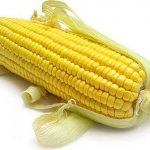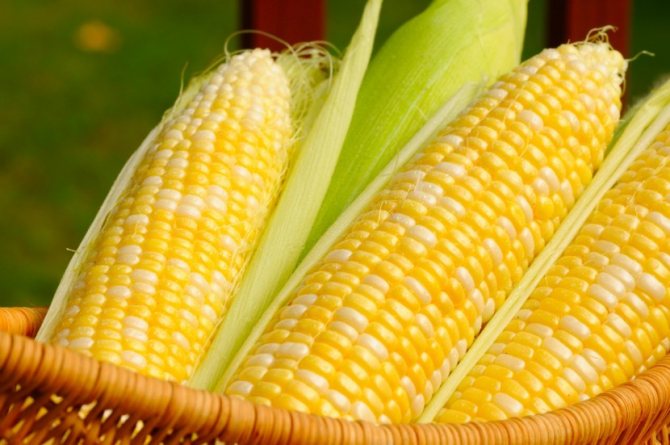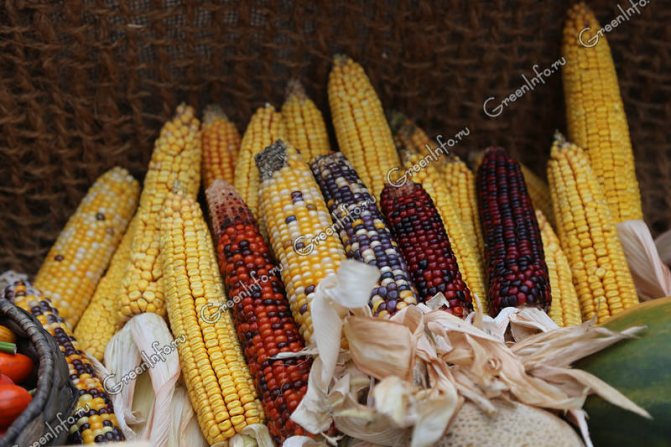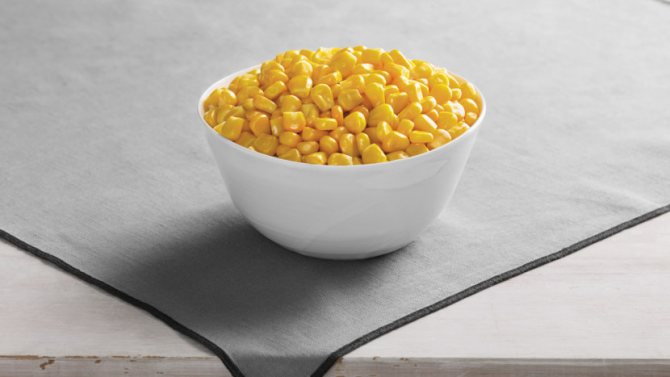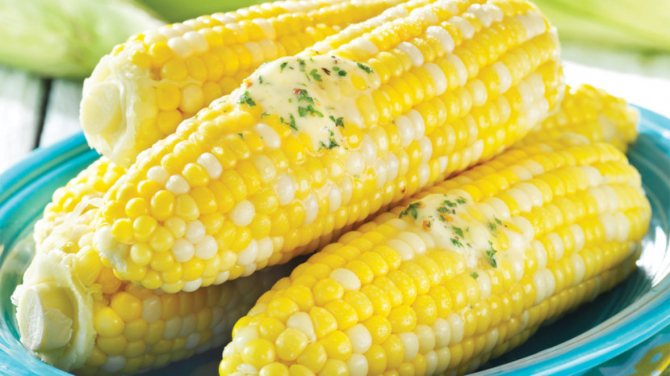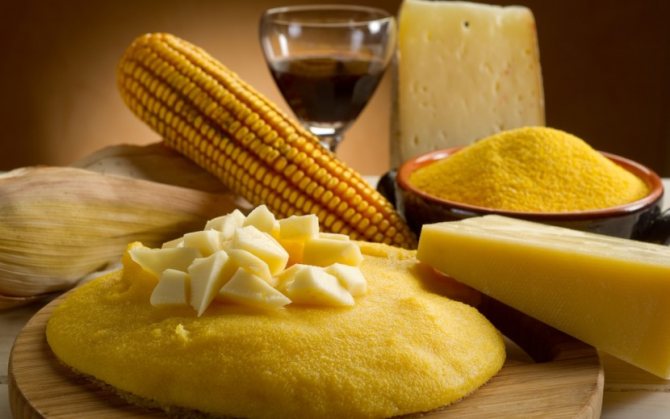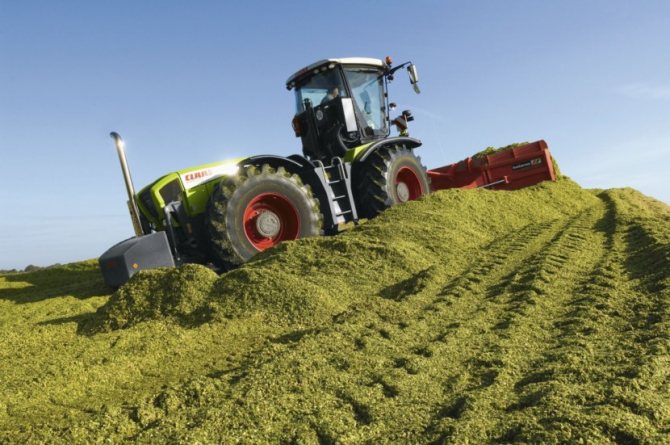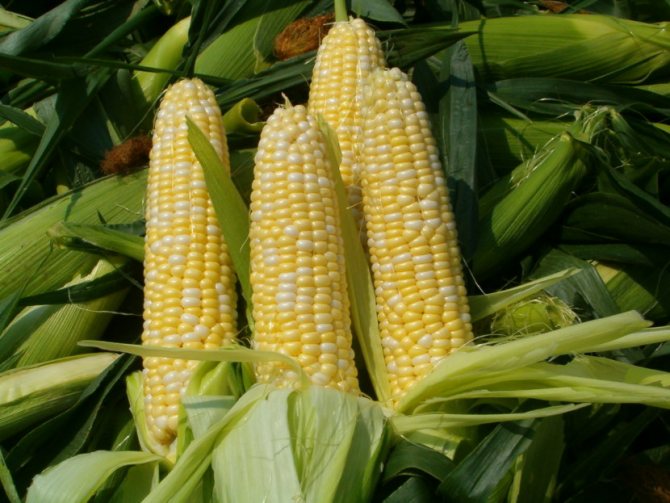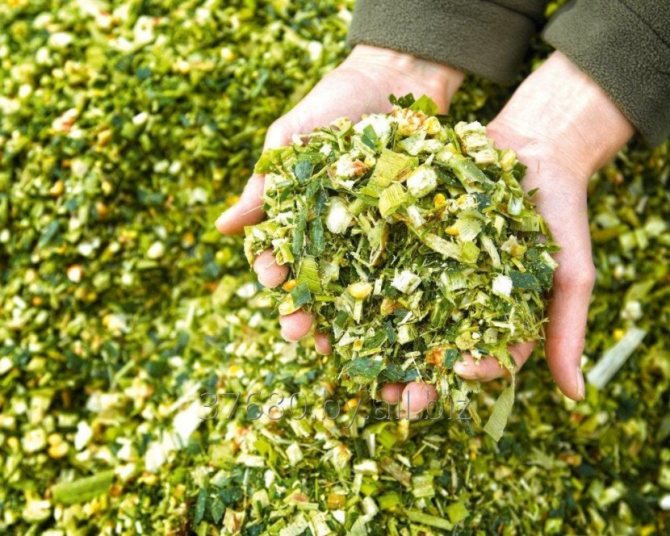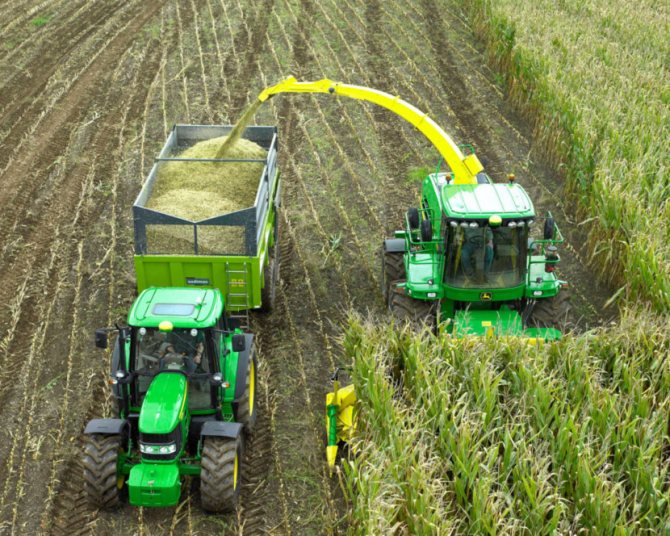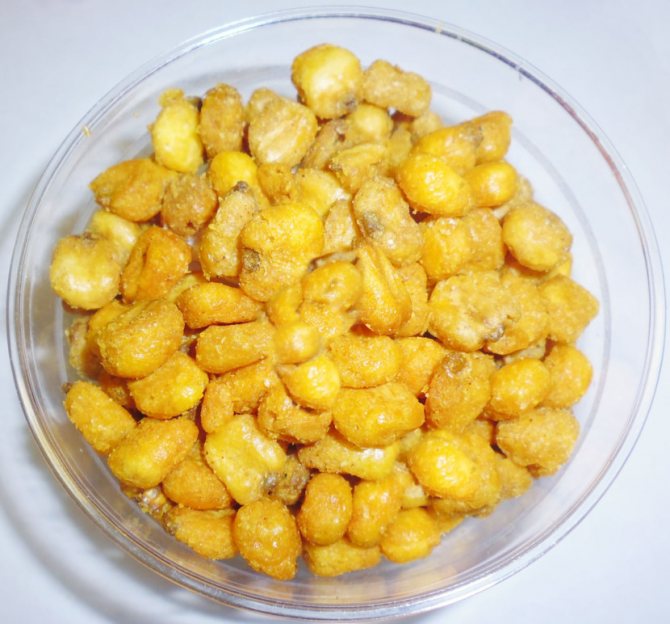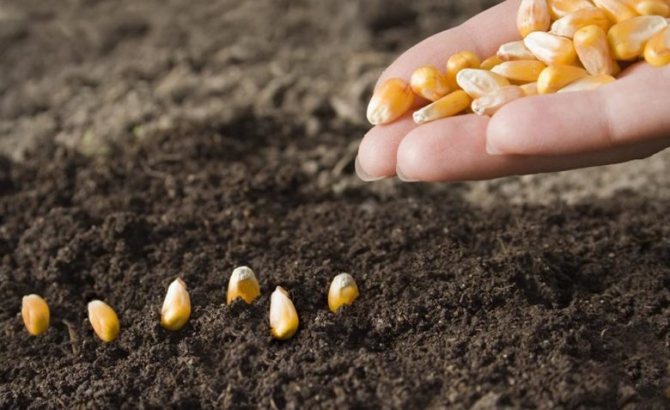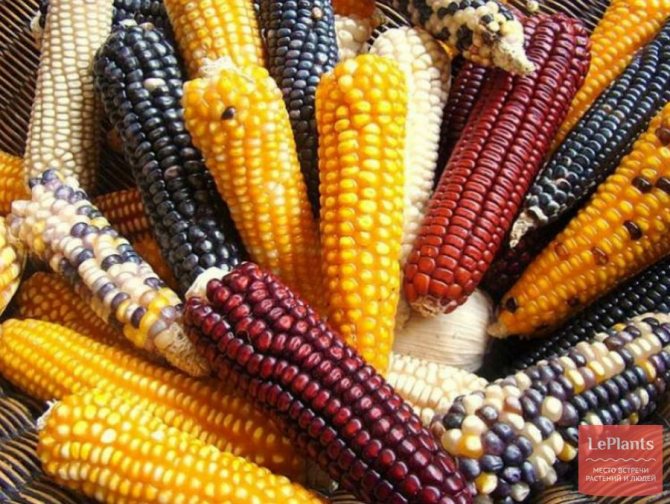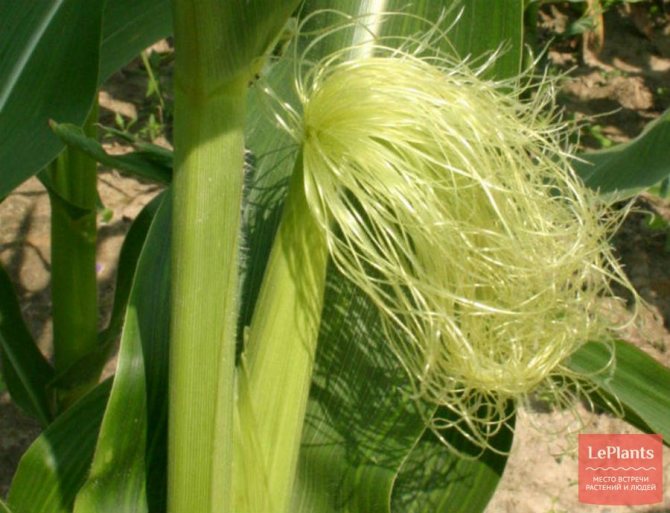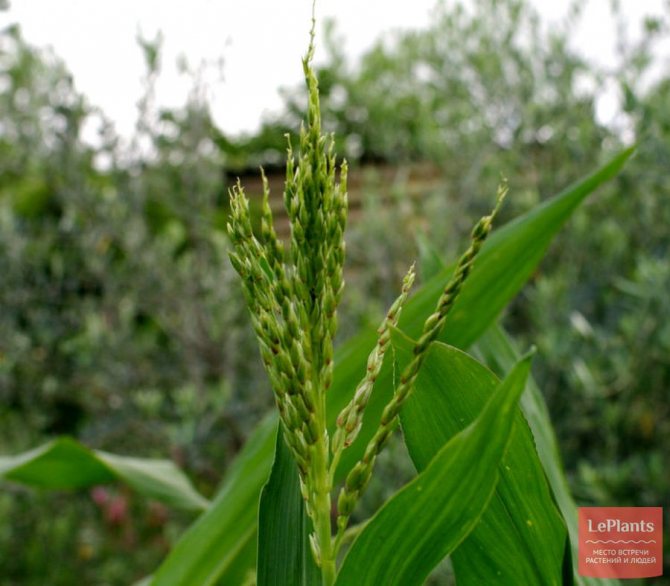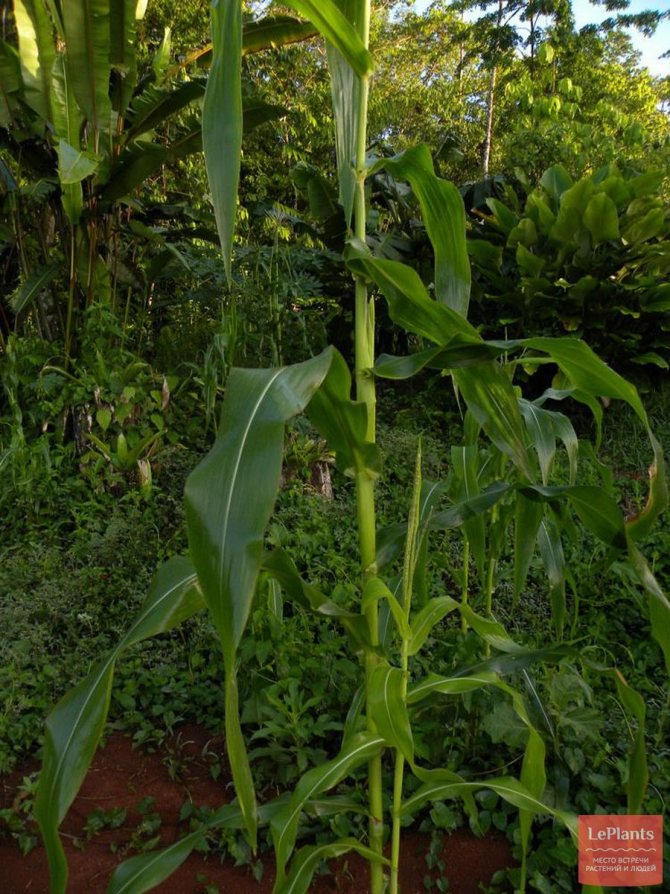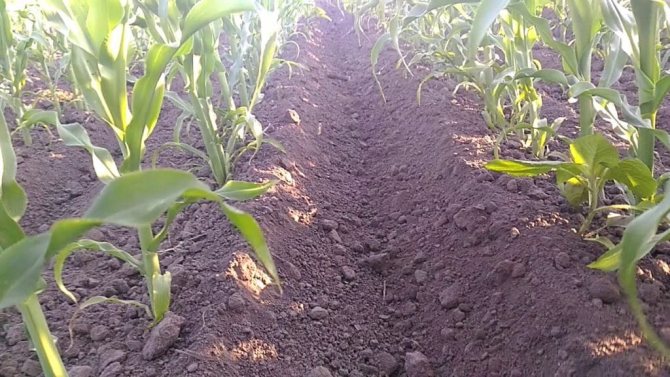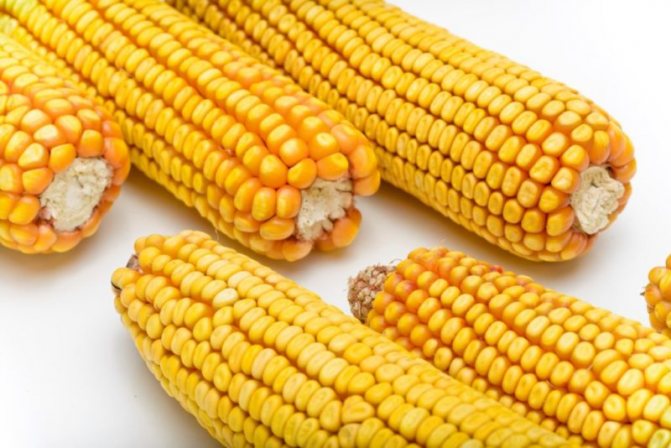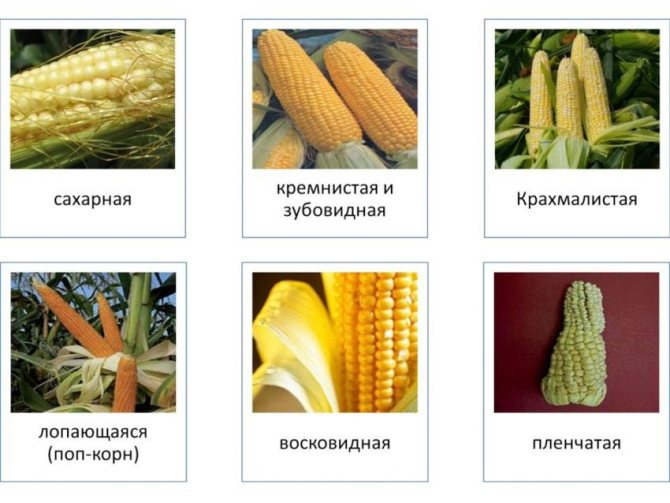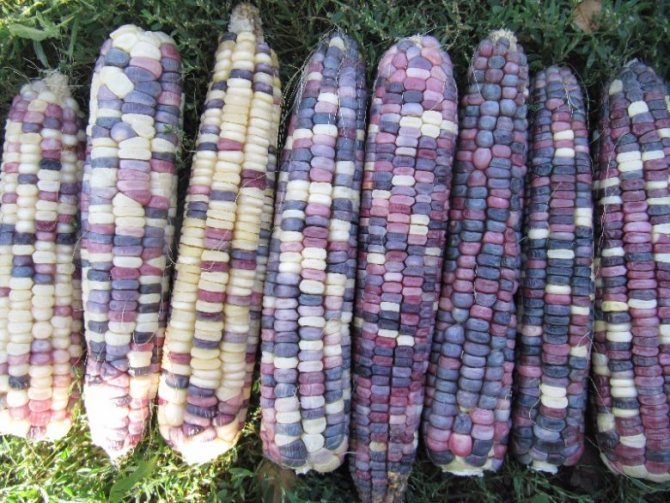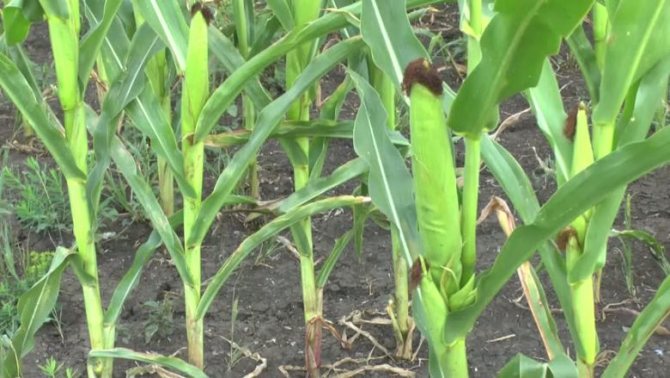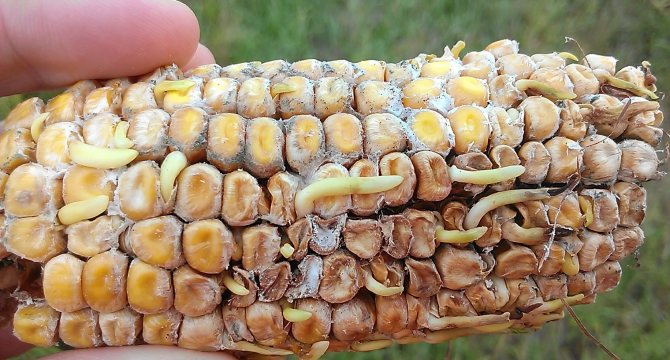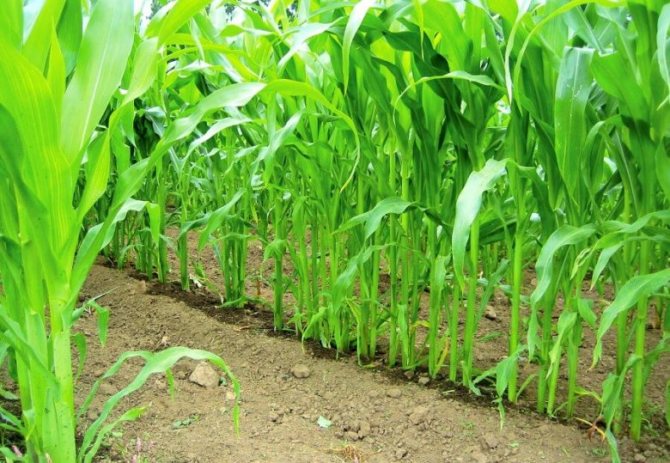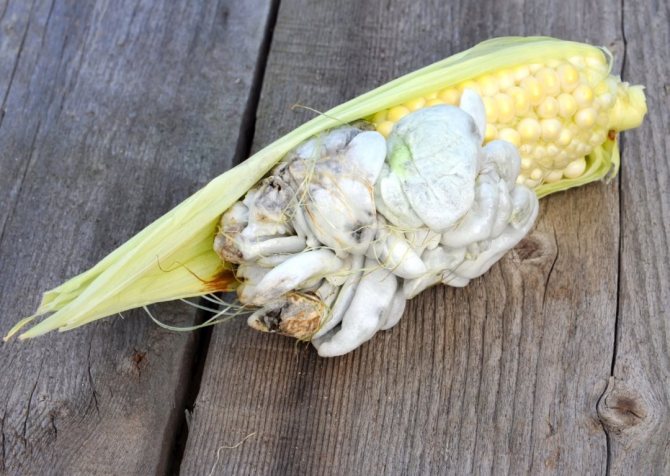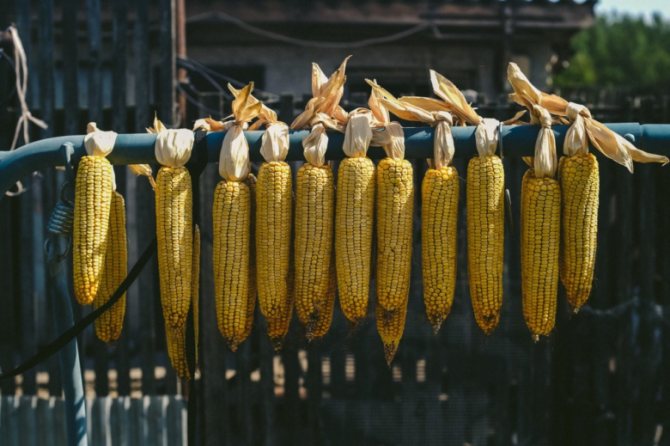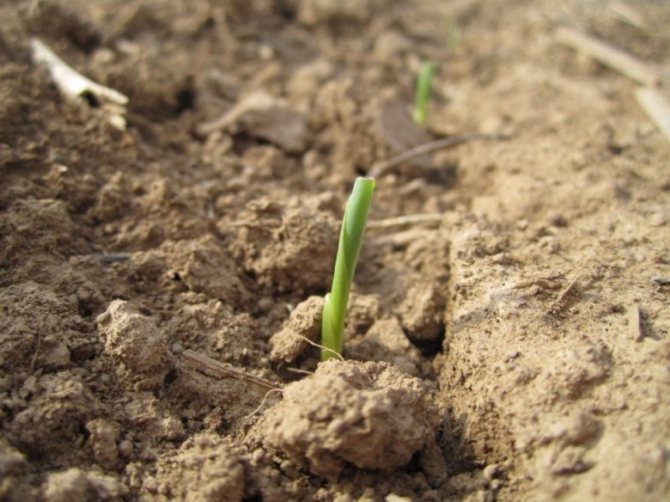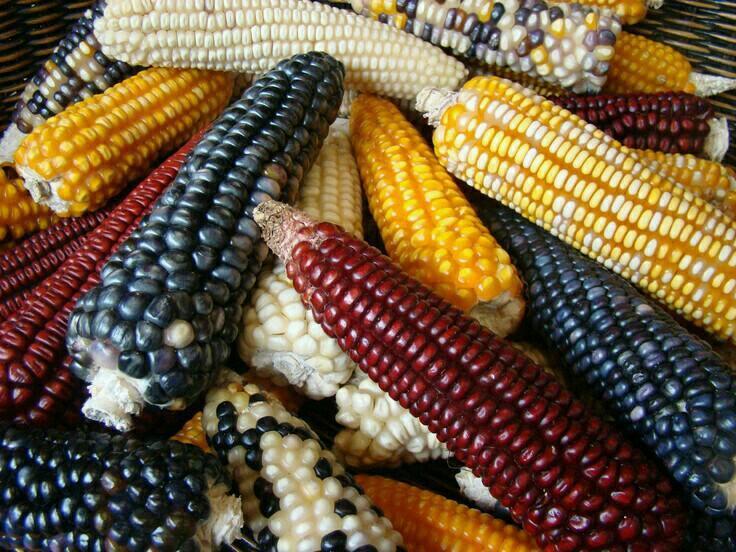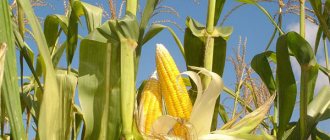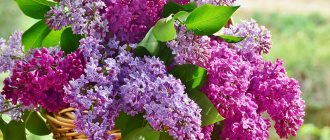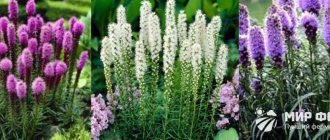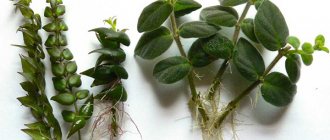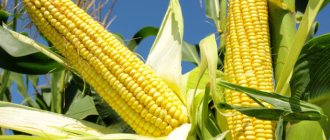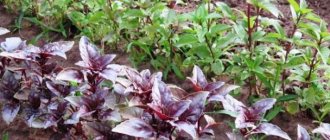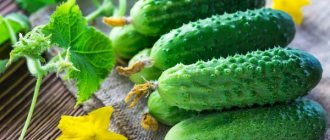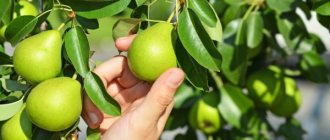| Calories, kcal: | Proteins, g: | Fats, g: | Carbohydrates, g: |
| 119 | 3.9 | 1.3 | 22.7 |
Common corn (Zéa máys) is an annual herb from the cereal family.
Other names: Maize, sweet corn.
Corn is widely distributed throughout the world as a food grain and is cultivated in many countries. America is considered the birthplace of corn, where it is one of the favorite delicacies of the population, and in agriculture it is used as feed for pets. In Russia, corn is grown in the south of the European part of the country. In the wild, corn is not found, it is an exclusively cultivated plant.
Features of growing corn
Corn is a monoecious plant with dioecious inflorescences, its pollination is cross. The powerful roots of maize are able to go into the soil to a depth of one and a half meters. In addition, supporting roots appear on its stems in the underground part, tightly fixing plants, and helping the absorption and retention of water and beneficial minerals by the plant.
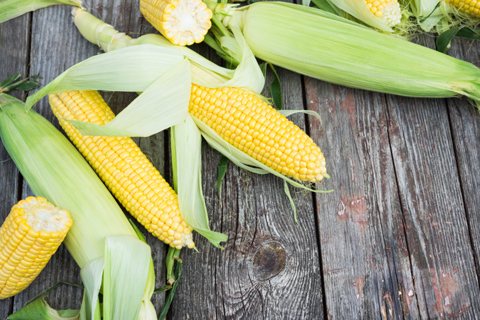
Planting and growing corn, the secrets of getting a rich harvest.
Corn has erect stalks, the minimum height of which is 60 cm, and the maximum height is 6 meters. The culture produces inflorescences, which are a complex ear, panicles appear at the tops of the stems of male inflorescences, and female ones are distinguished by leaf axils.
A compound ear is an ear of corn of different weights (ear weight: 35-500 grams).
Mr. Dachnik advises: rules for harvesting and storing corn
The maturity of corn is divided into several stages: milk - the grains are soft, the leaves are difficult to separate, darkening of the tips of the panicles, biological maturation - the leaves turn yellow, the grains are orange.


The collection should be carried out either during the milk period or during the biological period. If it is intended to be eaten fresh, it is necessary to harvest at the dairy stage. For other uses, the biological maturity of the plant will do.
It is worth collecting very carefully, breaking off at the very base, first those that are closer to the top. Corn is stored in a dry place, on a hill. Recommended in mesh, hanging bags.
How to plant corn correctly
Most summer residents consider the following actions to be planting any plants:
- Digging up the soil.
- Leveling out clods with a rake.
- Sowing seeds.
- Regular watering after sowing and until harvest.
- Periodic weeding of plants.
However, in order to obtain a high yield, it is necessary to follow some rules that all novice gardeners should know about.
If you pay attention to the crops, you can notice the alternation of corn fields with wheat. This was the way it was on the collective farms. Hence, it can be argued that corn fields are better planted on the spot:
- Winter crops;
- Cultivated;
- Legumes;
- Spring wheat.
If you decide to plant corn in garden plots, places where tomatoes, melons or root crops were previously grown are best suited for it.
When growing corn in garden plots, you need to find a place that is warm and sunny.A variety of soils are suitable for this crop, but it is preferable to grow it on well-warmed light soils with a high moisture content. Only heavy low-lying soil is unfavorable for this culture, which has insufficient outflow of water.
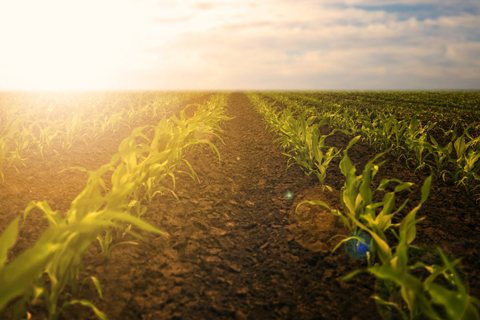

Methods and recommendations for planting and caring for corn.
To obtain high yields, soil fertility is necessary. You can do this yourself. In the fall, digging up the site, you need to add a certain amount of organic (rotted manure) and phosphorus-potassium fertilizers, the proportions of which are indicated on the packages.
When warm spring days come, level the ground in the area where you plan to plant corn with a rake, breaking the crust and earth lumps.
Variety selection
The first thing to start with is to decide on a variety. The choice of variety directly depends on the region of your residence. Corn is southerner in origin.
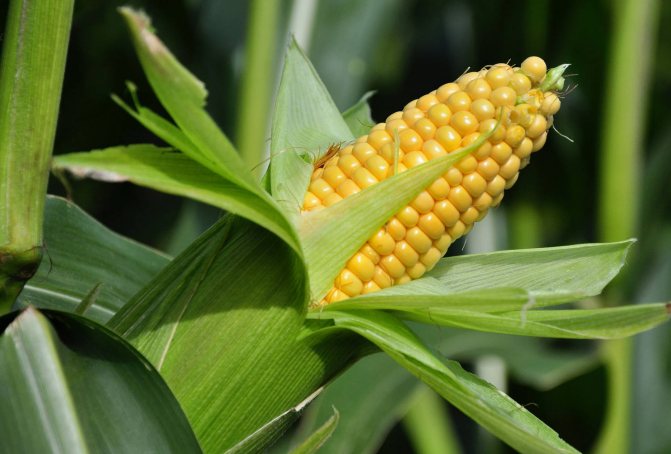

It began to be cultivated about 12,000 years ago in the lands that are now occupied by modern Mexico.
Corn moved to Europe in the 15th century.
As a result of centuries of selection, a huge number of various varieties of this culture have appeared.
It goes without saying that the further south the corn is grown, the less effort is put into caring for it.
But nowadays, modern cultivation technologies and new varieties make it possible to grow corn even in the Moscow region. Below is a selection of the best mid-lane corn varieties.
Pioneer of the North
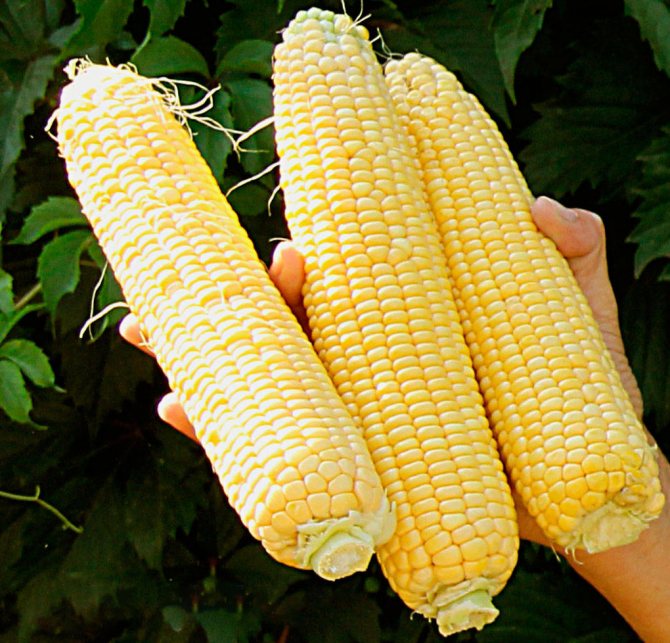

The variety is recommended for cultivation in Central Russia and regions close to the north.
The main advantage is early ripening, it has good taste.
The size of the cob is not very large, its average weight is about 70 grams, but the ovary gives 3-5 pieces.
1-2 ears reach full maturity.
Zarya 123
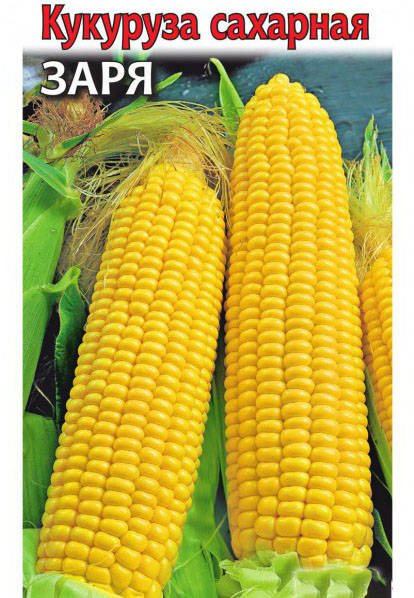

Ripening period is very early (2-2.5 months from germination).
The variety is medium-sized - about 1.5 m in height. The weight of a 14-row ear is on average 0.25 kg.
The taste is excellent, the grains have an orange tint.
Resistant to diseases and pests. Differs in hygrophilia.
Dobrynya
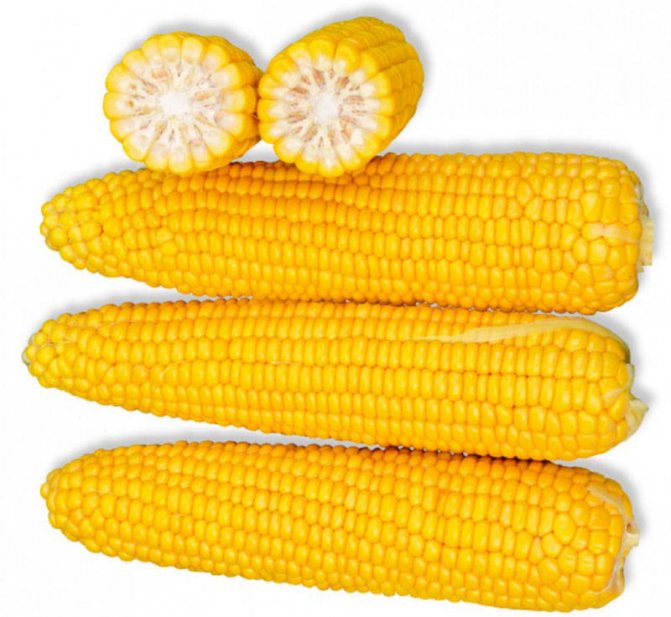

It ripens quite early (65-70 days from germination). 18-row cobs are large - about 25 cm long, about 6 cm in diameter.
Medium-sized variety - about 1.6 m in height.
When the plant reaches a height of 70 cm, the formation of cobs begins.
There are no special maintenance requirements, it has good resistance to mosaic, wilting and rust.
A very sweet sugar variety.
Spirit
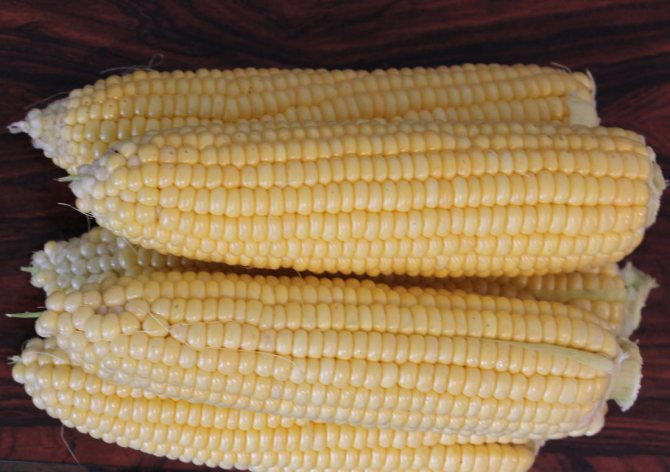

Hybrid variety with an average ripening period (90-95 days from germination).
It grows up to 210 cm, cobs about 23 cm long with large, sweet and delicate grains of golden yellow color.
The corn yield is high.
It has good resistance to infection by fungi, viruses and rot.
Sundance
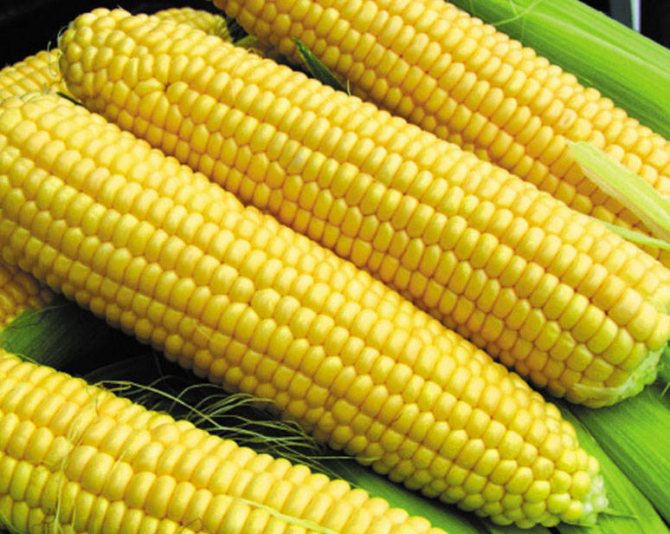

Ripening period is early (70-85 days from germination). The variety is medium-sized - it grows no higher than 150 cm.
The ears are medium in size - about 20 cm long, about 5 cm in diameter, with slightly elongated bright yellow grains.
Excellent taste.
Jubilee
A high-yielding hybrid with an average ripening period (85-105 days from germination). The variety is distinguished by its tallness - it reaches 250-280 cm in height.
Pearl yellow ears are 21-23 cm long. The kernels have a thin skin and a delicate sweet taste.
Endowed with good disease resistance. The purpose of the variety is universal. It retains its qualities perfectly after defrosting.
Triple sweetness
It belongs to early, high-yielding varieties with an average ripening period (95-100 days from germination). It reaches a height of 200 cm.
An ear of medium length (up to 20 cm), weighing about 0.2 kg. Large grains have a rich yellow color, thin delicate skin and a very sweet taste.
Minor
Dwarf maize Minor grows to a maximum of 130-150 cm, which makes it easy to care for. The main difference is the miniature size of the cobs (10 cm in length, 2 cm in diameter).
The ear is stuffed with small grains of milk, which have a very delicate flesh and a yellowish color.
On a small compact bush, many stepchildren are formed, on which these buds develop in much larger quantities than in tall corn (there can be up to 10 of them).
Ripening of the cobs is non-simultaneous, this prolongs the fruiting time of the plant.
Experienced gardeners are advised to use hybrid varieties for growing.
They yield more yield, higher resistance to diseases, as they usually undergo special processing.
Also, there is no need to decontaminate and soak the corn seed.
Planting corn correctly in open ground
Planting corn is carried out in the soil, which should warm up to 12 ° C. The day before planting the crop, nitrogen fertilizers are applied: 200 grams are taken per 10 meters of square soil. Before the planting process itself, the soil should be loosened (the depth of loosening should be at least 10 cm).
To accelerate seed germination, it is necessary to properly prepare them for sowing. They warm up for about five days - the air temperature should be 35 ° C, after which the seeds are soaked in warm water.
Sowing corn is best at the end of April, and the sowing depth should be 7 cm. The crop emerges in the field very quickly - after 10-11 days. If corn is sown in a garden, it is best to do it in neat rows. The spacing between the rows should correspond to 60 cm, and leave 40 cm between the plants of the same row.
It is best to sow corn along the border with cucumber beds on the windy side (drawstring planting). Planting the plants closely will negatively affect the yield. Therefore, you can use the best planting option, which is called the square-nesting method.
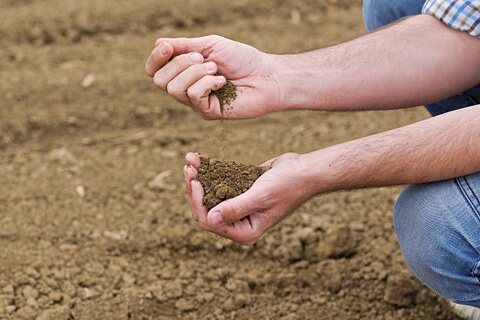

Preparing the soil for planting corn.
For this, holes are pulled out, watered abundantly. Three grains of corn are placed in each hole. Then the holes are sprinkled with moist soil and mulched with dry earth. After emergence, it is best to choose the strongest seedling, and those that are weaker, just pull out.
It is also possible to use the pipelined method. In this case, corn of various varieties, which have different ripening periods, is sown every 15 days. In this case, you will be harvesting continuously throughout the summer.
Most varieties and hybrids of corn are capable of germinating at + 10 ° C. Therefore, many amateur gardeners plant seedlings - in this case, you can grow a crop in a shorter time, and not worry about possible frosts.
General information
Corn has been cultivated by humans since ancient times. It was her from all other cereals as a full-fledged crop that began to be grown seven thousand years ago in Mexico. However, the first corn still appeared in the fifteenth century BC. Several centuries later, people realized that it was necessary to get new varieties from it in order to provide a larger supply of this cereal, which was used at that time as the basis of the diet of our distant ancestors.
Modern scientists are sure that the ancient civilizations owe their appearance to corn. They made such conclusions because agriculture began to develop precisely thanks to this cereal. And the more it improved, the more developed the society became.
After the culture was introduced to Europe in the fifteenth century, it began to spread throughout the world, confidently winning its place among other cereals.
Modern gardeners know more than a hundred hybrids, which they successfully cultivate.It is not difficult to grow corn on your site, the main thing is to observe agrotechnical measures and treat it from pests in a timely manner, only in this case you can count on good yields of this appetizing and healthy cereal.
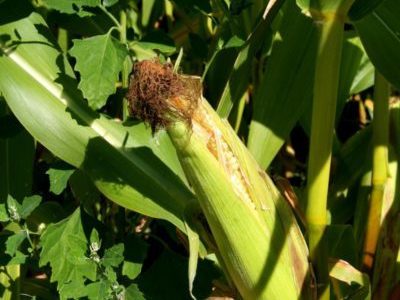

How to properly plant corn using seedlings
Seedlings are planted most often, the age of which is about 30 days. In early May, seeds are sown. For this, it is recommended to use special humus-earth or peat-earthen bags, which makes it possible to exclude the risk of damage to the root systems of plants when isolating seedlings and replanting them.
Transplantation is negatively tolerated by this culture, since its roots are often damaged. To prevent this from happening, when planting corn seedlings in a container, make sure that its root system completely fills it.
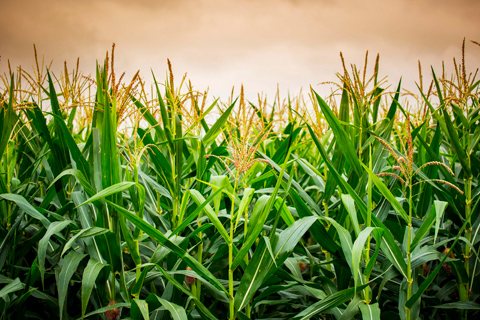

Growing corn using seedlings when planting.
By mid-June, corn seedlings are transplanted into open ground. At this time, the sprout should release three true leaves. Seedlings are planted to such a depth, which is dictated by the clod of earth in which they were grown. After planting corn, it must be watered and mulched over the soil.
How to properly care for corn
For corn, various fertilizers serve as excellent nutrition in the form of:
- Compost;
- Humus;
- Mullein;
- Chicken (chicken manure).
Plant feeding should be done at a time when six full-fledged leaves appear on the corn seedlings. In addition to organic fertilizers, some gardeners introduce liquid fertilizers into the aisles in the form of:
- Ammonium nitrate;
- Potash fertilizers;
- Superphosphate.
In the beginning, corn does not grow rapidly, for this reason it needs regular weeding and loosening for better growth. During the growing season, it is enough to loosen the row spacings three times. To prevent damage to adventitious roots, near tall plants, the soil should be loosened to a shallower depth.
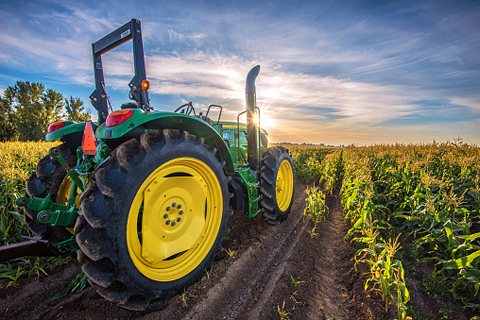

Necessary conditions for the care of corn.
Some gardeners practice additional pollination of corn plantings. To do this, you need to pluck the male flowers (panicles that adorn the tops of the stems), and shake them over the female flowers, which are flowering cobs.
When the lateral shoots, called stepchildren, appear in corn, they are removed, otherwise the formation of young ears may be delayed and the growth of plants may slow down.
Corn and watering is necessary, which is especially important during the period when the ears are laid and ripen, however, avoid excessive watering.
Diseases and pests
Corn, like other cereals, over the years of its existence has failed to develop immunity to certain ailments, including:
Fusarium on the cob - the disease manifests itself in the appearance of a pink bloom on the grains. This disease is incurable. But it can be prevented by soaking the seeds before planting in a weak solution of potassium permanganate for twelve hours;
Fusarium seedling - the disease manifests itself in the coloring of young plants in a brown color and their lag in development. It is impossible to get rid of it. To prevent its development, before planting, the seeds should be treated with a solution of "Fitosporin";
Helminthosporiosis - the disease manifests itself in brown spots on leaf plates, wavy leaves and gradual decay of the cob. To avoid its development, it is necessary to sow high-quality seeds and feed the crop with potash fertilizers in a proportion of 40 grams per 12 liters of water. It is recommended to pour such a top dressing two liters under the bush;
Bacteriosis - with the development of the disease, the leaf plates and stems are covered with a fungal bloom. The disease cannot be cured. When it appears, the bush is pulled out and burned.
Also common is the ailment presented by corn smut, appearing in the modification of grain caused by the action of the fungus. You can protect crops from its appearance by disinfecting seeds and buying them from trusted producers.
From insects, corn is threatened wireworm, scoop and aphid... Their appearance leads to the destruction of the ears.
To prevent their appearance, during the period of laying and ripening of the ears, the corn should be treated twice with the biological insecticide "Bicol" at intervals of a week. The drug should be diluted according to the instructions on the package.
It is impossible to use ordinary insecticides during this period, as they will make the corn unusable due to the large amount of toxic substances contained in the insecticide that gets on it.
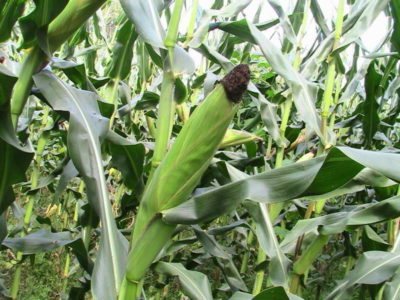

Ordinary or seed corn
This is the most common and familiar corn variety. This main species has various subspecies that differ from each other in morphological characteristics of the grains, and can be:
Sweet corn - Russians love this corn most of all, it is most often grown in their summer cottages. She is the progenitor of many delicious hybrids of this culture. After corn reaches full maturity, it accumulates a lot of sugars. The grains are characterized by a wrinkled surface, and if they are cut, the surface is glassy. This subspecies is used by the canning industry.
Waxy corn - a distinctive feature of the grains is the dullness of the peel and its smoothness. The grain has a wax-like structure.
Filmy corn... This subspecies is not used by any industry, since the cobs with grains are coated in the form of individual wrappers.
Pop corn... If you heat the grains of this subspecies, they begin to burst. Popcorn came from this corn. The grains have a smooth and shiny surface. There are two subgroups: rice and pearl barley, which differ in the taste of the grains, reminiscent of the taste of pearl barley and rice flour.
Starchy corn... The grains have a smooth, mealy surface. used to make cornstarch.
Tooth corn... The grains are shaped like a tooth with a depression at the top. This subspecies is the main corn crop grown in the United States for feeding livestock.
Flint corn... The grain has a wrinkled surface, the color of which is white or yellow, and its composition is hard starch. The top of the grain is rounded, has no depression. The subspecies is used for the production of corn flakes and sticks.
Crossing flint and dent corn gives semi-toothed corn hybrid.
Sharp corn (nose), which is not widespread because it is of no value.
Corn Caragua, which is grown in North America for livestock feed. This plant has a very large size.
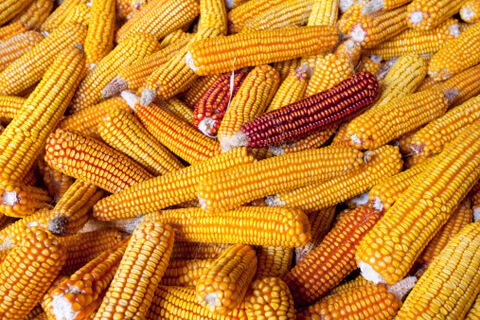

Varieties of corn varieties.
Where is it used?
Due to its valuable composition, corn has found wide application in various spheres of human life.
Food industry
Maize is actively used in cooking. Many are accustomed to the fact that the heads of cabbage just need to be boiled, sprinkled with salt and eaten. But corn kernels can be added to a wide variety of dishes. It can be salads, casseroles, soups, pastries. The nutritional value of this cereal is endless. It contains a huge amount of vitamins and minerals. Grains contain quality vegetable protein and essential amino acids.
How else is used in the food industry:
- Butter. From the germ of the grains, a valuable oil is made, which is used for food, just like sunflower oil. It has a pleasant aroma and taste.
- Starch. In the same way as starch is made from corn potatoes. It is used as a binder in cooking.
- Popcorn. It is made from a bursting variety. Eat salty or sweet.Various seasonings are added for flavor.
- Flour. Bread and confectionery products are baked from it. They prepare sticks and cereals, which many people eat for breakfast.
- Dried corn. It is crushed and cooked hominy, both salted with meat and vegetables, and sweet in milk and butter.
See also Healing properties and contraindications of corn stigmas
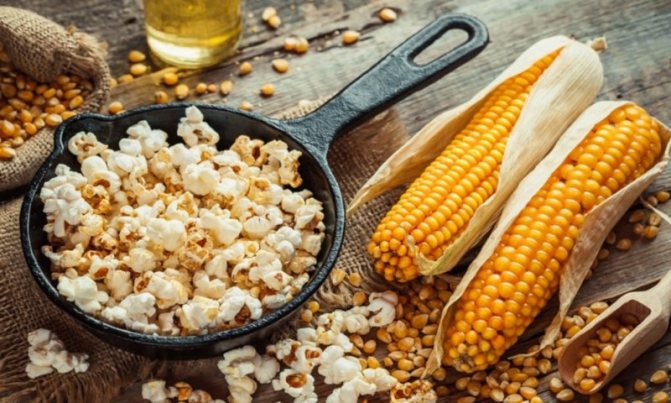

The grains are frozen and canned. So you can make a large supply of this valuable cereal and use it as needed. The agricultural industry uses leaves and overripe heads of cabbage for animal feed.
Medicine
Corn is a valuable raw material for traditional medicine. For medicinal purposes, healers use all parts of the plant.
Expert opinion
Stanislav Pavlovich
Gardener with 17 years of experience and our expert
Ask a Question
Important! Corn oil is a valuable source of Omega-3 fatty acids. Its use in food will help lower the level of "bad" cholesterol. This will help to significantly reduce the risks of heart attack and stroke.
Diseases for which it is recommended to add corn to the diet:
- gastritis;
- colitis;
- hemorrhoids;
- pancreatitis;
- diabetes;
- diarrhea;
- gout;
- cholecystitis.
It is useful to use not only boiled grains, but also corn oil. Grain has a choleretic and diuretic effect, therefore, in moderate doses, it should be consumed by those who suffer from liver and biliary tract diseases.
Ecology
In the field of ecology, maize reveals all its valuable qualities:
- Polymeric material. During the fermentation of corn sugar, polyactide is obtained. Surgical threads, food packaging are made from it.
- Fabrics. Polylactic yarns are widely used in the production of textiles. Organic corn tissue has the same benefits as synthetic tissue, only it poses no threat to the environment as it is biodegradable.
- Paper. Cellulose, lignin and pentosan are chemical constituents in corn stalks. To obtain a pulp, the stems are boiled, crushed, then formed into sheets and dried. Technology has its own problems. The paper is often either hard or too thin.
An industry based on leaves or stems contributes to the environment. Products decompose quickly and do not harm the environment.

